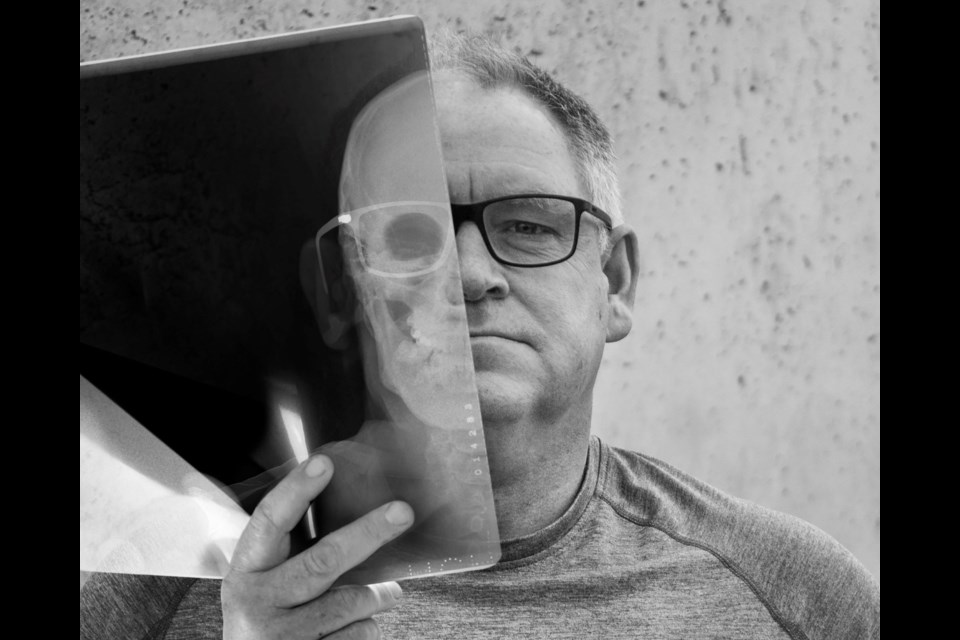It’s no secret that we live in a superficial world fixated on image, branding and what looks good. That’s true in many realms: whether it’s the fashion industry pushing novel styles upon us, manufacturers catering to various lifestyles with their products, or even interpersonally, where many folks tend to sweep conflict under the rug instead of addressing it.
Nick Veasey doesn’t like to be superficial. He prefers to peel back the layers and go deeper, and that’s exactly what he does in his career.
The British national once worked in design and advertising, where he grew to love the power of photography. After gaining the confidence to strike out on his own, he spent nearly 30 years leveling up his skillset and portfolio. His works are now on display across multiple continents: including the Whistler Contemporary Gallery (WCG), London’s Victoria & Albert Museum and the world’s largest photography exhibit in Fotografiska, Stockholm.
However, what really sets Veasey apart is his medium of choice. He’s not a painter, illustrator or sculptor. Instead, he utilizes X-rays.
Beauty from ashes
X-rays were first discovered in 1895 by German scientist Wilhelm Conrad Röntgen. If you’re a nerd, you might know them to possess the second-shortest wavelengths among all forms of electromagnetic radiation. Only the gamma rays generated by supernovae and nuclear bombs are more powerful and energetic.
If you’re a layperson, you likely don’t care about the physics of X-rays, but you’ve seen many instantly-recognizable images of bones and tissue in a human body. If you’re a Whistlerite, your sporting endeavours may have caused you to need multiple such scans during your lifetime. Plus, many of us have had to subject ourselves and our luggage to airport security devices which make sure we’re not carrying concealed weapons for nefarious purposes.
“This society of ours, consumed as it is by image, is also becoming increasingly controlled by security and surveillance,” Veasey says in a press release. “Take a flight, or go into a high-profile courtroom and your belongings will be X-rayed. The post arriving in corporations and government departments has often been X-rayed. Security cameras track our every move. Mobile phone receptions place us at any given time.”
He continues: “X-rays can also bring up bad memories; say you had a relative who died of cancer or something like that. Sometimes, medicine is bad news. I quite like the fact that I'm using equipment that is used for all this negativity—like cancer and bombs and terrorism and all that—and making something very beautiful with it.”
Pretty though its images can be, X-rays generate sickness and damage DNA if used irresponsibly. Veasey is anything but irresponsible, operating mostly out of Kent, England in a building with 700-millimetre thick concrete walls that contain the potent ionizing radiation within. A film processor and X-ray machines of varying output help him ply his trade.
Veasey’s subjects run the gamut from vehicles to clothing to still depictions of people and animals. Large objects may require dozens or even hundreds of separate images, assembled and enhanced on a high-resolution scanner before being touched up by a group of specialists on his team.
The end result is a unique picture that far outstrips your conventional medical X-ray in terms of detail and aesthetic appeal.
To analyze, or to create?
Every artist is faced with innovation and challenge in their career, but very few deal with the intersection of art and science as much as Veasey does. It’s an unusual marriage of philosophies, to say the least.
“Science is all about data,” says Veasey. “It's about information and trying to solve problems, whereas my art really is just experimental. It's not there for any particular reason.”
The 62-year-old tends to find himself in a kind of courting process with the scientific minds in his network. Initially, they push back on his desire to take a new image when functional images of a given subject already exist. He stands his ground, assuring them that the only way to prove the value of a new image is to actually make it.
Ultimately, things work out for the better.
“After a time, [the scientists] forget their mantra, their reason for existence, and I forget mine,” remarks Veasey. “I take a little bit of their analytical approach, and they take a little bit of my creative experimental approach. Together, we go to places that neither of us would get to on our own.”
Veasey doesn’t make as much art as he used to. His projects these days are much more complex than those from his early career, requiring not only lots of time to image but negotiation with stakeholders to navigate issues of health, safety and access. Occasionally, the Brit needs to think outside the box: for instance investing over £150,000 in a mobile X-ray trailer to scan priceless historical garments from the Victoria & Albert Museum.
That said, Veasey’s ambition remains undimmed by time, and he believes the quality of his work has grown by leaps and bounds.
“It’s very appealing to a wide audience,” he opines. “X-rays provide a different way of looking at the world, and it's a very honest, straightforward way. When I have a show, kids get it straight away.
“Some art can be a bit self-serving, where it's referencing other artworks from the canon or history of art. Mine isn’t that pretentious. It's an X-ray of a car, and you can see the engine. I quite like that. I'm quite a straightforward guy, and my art is straightforward.”
On March 30, Veasey will make his inaugural visit not only to Whistler, but Canada in general, where he’ll give a talk at the Four Seasons Hotel. Learn more at https://whistlerart.com/artist/nick-veasey.




